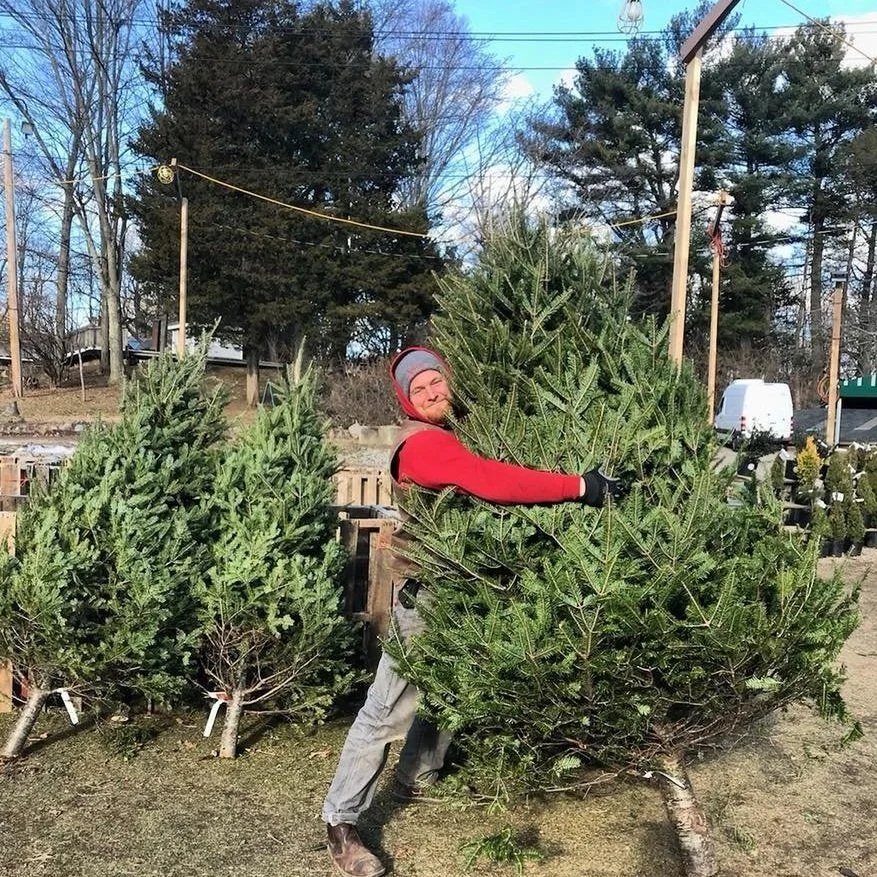Christmas Tree Information
Getting your tree on the weekend? Weekend Parking Reservations are required!
Varieties:
Balsam Fir: The classic Christmas tree from Nova Scotia, balsam firs are prized as the most fragrant variety. Looking for a sustainably raised tree from a family farm? Check out our trees from Craig Cartwright’s Giants Lake Balsam Firs. Just look for the blue tag. We have Premium, #1, and Select Natural grade of balsams. These are most affordably priced trees.
Fraser Fir: Direct from Mitch and Kim Poe of Cardinal Tree Farm in North Carolina, these dense and lush trees are sought after for their form and excellent needle retention. All our Frasers are Premium grade and come at a premium price.
Grade:
Trees are graded by growers based on how dense and symmetrical they are. Density is a result of shearing and natural growth patterns. A full tree with few holes will be a higher grade than a more open, asymmetrical tree. We have Premium (more dense), #1 (medium density) and Select Natural (less dense) in our yard.
Price:
Tree prices are related to the variety, grade, and height (age) of the tree. Our trees range in height 2’-12’ and in price from $18-$288. The most popular 6’-8’ balsam trees, range from $58-$85. If you experience sticker shock when first entering our tree yard, you’re probably looking at the Frasers!
Tree Care
All the trees at Allandale Farm are recently cut, properly stored, and grown by trusted partners. Here’s how to keep your tree looking fresh as long as possible:
Cut at least 2” from the base of the trunk. We can do that here for you or you can do it at home.
Place the tree in water immediately or no longer than 2 hours after cutting it. You can place it in the stand with water or in a bucket until you are ready to place it in the stand. For best results, recut if the tree has been out of water for more than two hours
Check and refill the water in the stand regularly. Your cut tree base should never be out of water. It’s not uncommon to have to fill your stand daily, particularly early on.
If you are using it, place tree preservative in the water at the first filling. The jury is out on how helpful tree preservative really is, but some folks swear by it. The most important thing is a fresh cut and getting your tree right into water.
Keep your tree away from heat sources. Heat registers, fireplaces, wood-burning stoves, space heaters, and south-facing windows will contribute to your tree drying out faster. If your home is very dry, consider using a room humidifier to add a little moisture to the air.
Additional Tree Information
Remember that as soon as you bring your tree inside, it begins to dry out more quickly. If you are purchasing your tree early in order to ensure best selection, consider keeping your tree in a cool, dark place (e.g. shed, garage, basement), or outside, protected from the sun and wind. When you are ready to bring it inside, give the trunk a fresh cut, taking at least 2" off the bottom and place it in a stand with ample fresh water. A location away from heat sources like fireplaces, heating vents and south facing windows is ideal.


